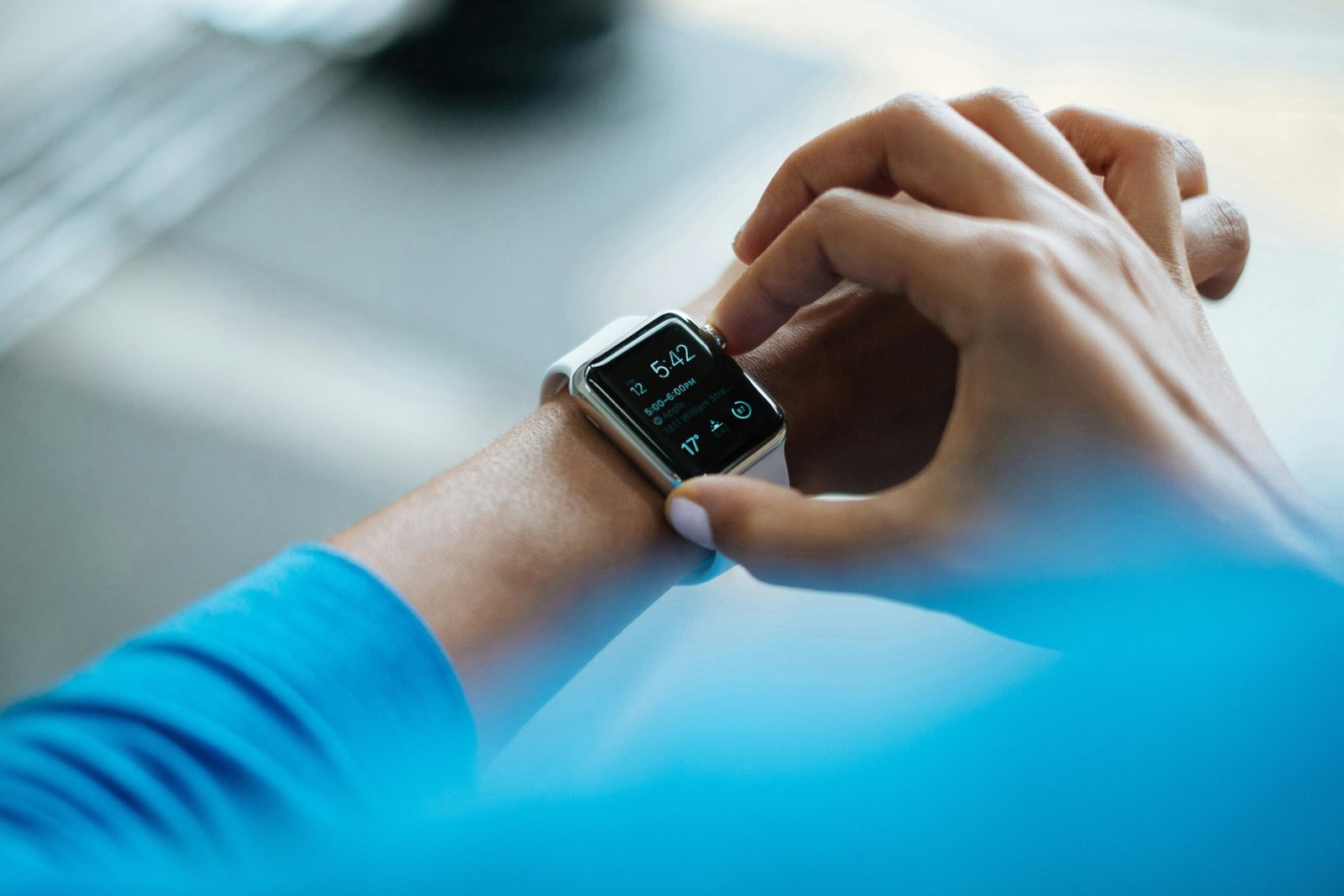

Introduction to Technology and Wellness
In today’s fast-paced world, technology and wellness have become deeply intertwined, influencing various aspects of our daily lives. The intersection of technology and wellness refers to the application of advanced technological solutions to promote and manage physical, mental, and emotional health. As technology continues to evolve at an unprecedented rate, it is reshaping the landscape of health and well-being in significant ways. Recognizing this intersection is crucial for understanding the potential benefits and drawbacks that come with the integration of innovative tech solutions into wellness practices.
The meteoric rise of smartphones, wearable fitness trackers, health apps, and telehealth services exemplifies how technology is being harnessed to monitor and enhance our well-being. These advancements provide individuals with the tools to take a more proactive approach to their health, allowing for personalized and real-time health tracking, remote consultations, and access to a wealth of health-related information and resources. This accessibility and convenience can lead to improved health outcomes, increased fitness levels, and a greater sense of overall well-being.
However, the intersection of technology and wellness also presents several challenges. With the proliferation of digital devices, individuals are often faced with issues such as information overload, digital addiction, and disruptions to sleep patterns. Additionally, while technology offers numerous advantages, it can also contribute to a sedentary lifestyle if not managed properly. Balancing the benefits of modern technology with mindful usage is essential to mitigate these potential negative impacts on health.
By examining the relationship between technology and wellness, this blog post aims to shed light on how technological advancements are shaping our approach to health and what measures can be taken to ensure that this integration fosters positive health outcomes. Understanding the dual nature of this intersection helps cultivate a more informed perspective on how to harness technology effectively for wellness, ensuring it serves as a beneficial tool rather than a detriment to our health.
The Evolution of Wellness Technology
The journey of wellness technology began with rudimentary health and fitness gadgets, such as pedometers and basic heart rate monitors. These early tools were primarily designed to record physical activity and provide users with basic health metrics. As technology advanced, so did the sophistication of these devices, leading to the development of more complex fitness trackers and smartwatches that could monitor a wide range of health indicators such as sleep patterns, caloric intake, and stress levels.
The advent of wearable technology marked a significant milestone in the evolution of wellness technology. Devices equipped with sensors that could track an individual’s heart rate, blood pressure, and even hydration levels became increasingly popular. The data collected by these advanced gadgets allowed users and healthcare providers to gain deeper insights into an individual’s health and wellness, enabling more personalized and effective wellness plans.
Simultaneously, the boom in mobile technology saw the rise of wellness apps that brought holistic wellness tracking right into users’ smartphones. These apps offered a variety of features, from guided meditation and mindfulness exercises to nutrition tracking and fitness coaching. Integration with wearable devices further amplified their effectiveness, creating a seamless ecosystem where data from various sources could be aggregated and analyzed to provide comprehensive wellness solutions.
Traditional wellness practices like yoga, meditation, and acupuncture also began to embrace technological advancements. Virtual reality (VR) and augmented reality (AR) have been used to offer immersive meditation experiences, while online platforms provide access to live yoga sessions and guided wellness programs. Smart home devices and virtual assistants now play a pivotal role in creating conducive environments for relaxation and therapeutic practices at home.
The continuous evolution of wellness technology underscores a paradigm shift in how we approach health and well-being. As these technologies become more integrated into our daily lives, the boundary between traditional wellness practices and modern technology continues to blur, offering new opportunities for a healthier, more balanced lifestyle.
Wearable Technology and Its Impact on Personal Health
In recent years, wearable technology has become an integral part of personal health management. Devices such as fitness trackers, smartwatches, and health monitoring gadgets have revolutionized how individuals monitor their physical well-being. These tools collect a plethora of data, including physical activity levels, sleep patterns, heart rate, and other vital health metrics, empowering users to make informed decisions about their health.
Fitness trackers often feature accelerometers and gyroscopes to measure movement, providing insights into daily step counts, distance traveled, and calories burned. Smartwatches take it a step further by integrating heart rate monitors, GPS, and sometimes even electrocardiograms (ECGs). Health monitoring gadgets can include specialized devices for tracking blood glucose levels, oxygen saturation, and other specific health parameters.
The data collected by wearable technology can be synchronized with mobile apps and health platforms, creating a comprehensive health profile for the user. This continuous monitoring allows individuals to set fitness goals, track progress, and adjust their activities to improve health outcomes. For example, sleep tracking features can identify disruptions in sleep patterns, enabling users to modify their routines for better rest and recovery.
Moreover, the real-time feedback provided by these devices can motivate individuals to stay active. Immediate alerts for achieving daily goals or warnings when deviating from health targets can prompt users to maintain a healthier lifestyle. Additionally, some wearables are now capable of detecting irregular heart rhythms and providing early warnings about potential medical conditions, prompting timely medical consultations.
Overall, the integration of wearable technology into daily life offers a personalized approach to health management. By leveraging the rich data collected by these devices, users can gain insights into their health status, identify areas for improvement, and take proactive steps to enhance their well-being. As technology continues to advance, the potential for wearable devices to further impact personal health positively is immense.
Mental Health Apps: Technology’s Role in Psychological Well-being
The proliferation of mental health apps has significantly influenced the landscape of psychological well-being. These digital tools have made mental health support more accessible, allowing individuals to manage their psychological needs through various innovative platforms. Notably, the range of mental health apps includes meditation aids, virtual therapy sessions, mood tracking applications, and stress management tools.
Meditation apps, such as Headspace and Calm, offer guided meditation and mindfulness exercises that aim to reduce stress and improve mental clarity. By leveraging technology, these apps provide users with easy access to therapeutic practices that were once confined to in-person sessions or physical media. The ubiquity of smartphones makes it convenient for users to integrate these practices into their daily routines, thereby fostering a culture of regular mental self-care.
Therapy platforms like BetterHelp and Talkspace have revolutionized traditional psychological therapy by providing virtual counseling through text, audio, and video sessions. These platforms facilitate connection with licensed therapists, offering a level of anonymity and flexibility that can be especially beneficial for individuals hesitant to seek face-to-face therapy. Patients can receive consistent support tailored to their schedules, thus enhancing the overall effectiveness of therapeutic interventions.
Mood trackers, including apps like Moodfit and Daylio, play an essential role in helping users monitor their emotional states over time. By recording daily moods and activities, these apps help individuals identify patterns or triggers that may affect their mental health. This self-awareness can be crucial in managing conditions such as depression and anxiety, providing users with data-driven insights that can be shared with healthcare providers.
Stress management apps, such as Pacifica and MyLife, offer various tools like deep breathing exercises, relaxing sounds, and cognitive-behavioral techniques designed to alleviate everyday stress. These features empower users to take proactive steps in handling stress, which can significantly contribute to overall psychological well-being.
However, while the benefits of mental health apps are substantial, potential drawbacks should not be overlooked. Concerns regarding data privacy, the quality of the content provided, and the need for professional oversight are important considerations. Users must exercise discernment in selecting and using these digital tools, ensuring they complement traditional mental health care rather than replace it entirely.
Telemedicine: Revolutionizing Access to Healthcare
In recent years, telemedicine has emerged as a pivotal development in the intersection of technology and wellness, significantly transforming the way healthcare services are delivered. As technological advancements become more sophisticated, telemedicine offers an innovative solution to bridge the gap between patients and healthcare providers, facilitating remote consultations that were once thought impractical.
Telemedicine primarily involves the use of telecommunication technologies to provide clinical health care at a distance. This can be achieved through various platforms and services, such as video conferencing, mobile health apps, and remote patient monitoring tools. These platforms are designed to emulate face-to-face consultations in a virtual setting, enabling healthcare professionals to diagnose, treat, and monitor patients without the need for either party to travel.
The benefits of telemedicine are manifold. Firstly, it enhances access to healthcare for individuals residing in remote or underserved areas, where medical facilities might be sparse or nonexistent. By eliminating geographical barriers, telemedicine ensures that no patient is left without adequate medical attention. Additionally, telehealth services offer considerable convenience, reducing the time and cost associated with traveling to healthcare facilities.
Moreover, telemedicine can significantly alleviate the strain on healthcare systems by optimizing resource allocation and preventing overcrowding in hospitals and clinics. Patients with minor ailments or chronic conditions can manage their health virtually, reserving physical visits for cases that necessitate in-person attention. This is particularly practical during public health emergencies, such as the COVID-19 pandemic, where minimizing physical contact is crucial.
However, telemedicine is not without its challenges. Regulatory and licensing issues remain a considerable hurdle, as healthcare providers must often navigate a complex web of laws that differ from state to state or country to country. Additionally, concerns about data privacy, cybersecurity, and the digital divide—where certain populations may lack access to the necessary technology—pose significant barriers to the widespread adoption of telemedicine.
Despite these challenges, telemedicine continues to gain traction, driven by the collective pursuit of more accessible and efficient healthcare solutions. By leveraging the capabilities of modern technology, telemedicine is set to revolutionize healthcare, making quality medical care more reachable to people across the globe.
AI and Machine Learning in Personalized Wellness
The intersection of artificial intelligence (AI) and machine learning with personalized wellness is a groundbreaking development in modern healthcare. These technologies have the capacity to analyze vast amounts of data from diverse sources, such as wearable devices, electronic health records, and even social media activity. Through advanced algorithms, AI is transforming raw data into actionable insights, offering tailored health and fitness recommendations, customized nutrition plans, and personalized mental health strategies.
AI-powered wellness platforms excel in creating individualized experiences. For instance, fitness applications utilize AI to assess user activity levels, sleep patterns, and even heart rate variability to suggest exercise regimens that are optimally suited to the individual’s needs and lifestyle. By continuously learning from the user’s behavior and progress, these platforms can adapt and refine recommendations in real-time, ensuring sustained engagement and efficacy.
In the realm of nutrition, machine learning algorithms analyze dietary habits, metabolic rate, and genetic factors to develop personalized meal plans. These plans are not only aimed at achieving specific fitness goals but also at improving overall well-being by considering nutrient deficiencies and potential food intolerances. By integrating physiological data with machine learning, personalized nutrition becomes a more science-driven practice, offering a higher degree of precision compared to generic dietary guidelines.
Furthermore, AI’s role in mental health is gaining significant traction. Machine learning models can detect early signs of mental health issues by analyzing patterns in speech, social media postings, and biometric data from wearable devices. This enables the development of personalized mental health strategies, ranging from custom mindfulness exercises to tailored therapy recommendations. Such proactive approaches can substantially mitigate the severity of mental health conditions, contributing to a more holistic wellness journey.
In essence, the integration of AI and machine learning in personalized wellness represents a significant leap forward in individualized healthcare. These technologies not only offer more precise and adaptive recommendations but also empower individuals to take control of their health in a highly informed and data-driven manner. As AI continues to evolve, its potential to enhance personal wellness is bound to expand, promising a future of healthcare that is both highly personalized and profoundly effective.
Privacy Concerns and Ethical Considerations
The advent of wellness technology has brought significant advancements in personal health management, yet it also raises substantial privacy concerns and ethical considerations. With various devices and applications continually collecting personal health data, the question of how this data is managed, stored, and protected becomes paramount.
Wellness technologies commonly gather sensitive information, including biometric data, exercise habits, sleep patterns, and even mental health indicators. While this data can greatly enhance personalized health interventions, it also presents potential risks if mishandled. Data breaches could lead to unauthorized access to sensitive health information, posing threats not only to individual privacy but also to broader societal trust in digital health solutions.
Moreover, the ethical considerations surrounding wellness technology are multifaceted. Key issues include the need for informed consent, transparency in data usage, and the potential for data exploitation. Users must be fully aware of what data is being collected and how it will be used. This transparency is crucial to maintaining trust and ensuring that users can make well-informed decisions regarding their personal information.
Another ethical concern is data equity. There is a risk that certain groups, especially vulnerable populations, may be disproportionately affected by data misuse. Thus, ensuring equitable access and protection for all users is essential. Additionally, developers and providers of wellness technologies bear the responsibility to uphold ethical standards in their design and implementation, prioritizing user well-being and privacy above commercial interests.
To mitigate these concerns, users and providers alike must adopt robust data security practices. Employing encryption, regular security audits, and secure authentication methods can enhance data protection. Moreover, fostering a culture of ethical mindfulness, where the implications of data use are continuously evaluated, can help maintain the integrity and beneficial impact of wellness technology.
Addressing privacy and ethical considerations in wellness technology is not just about compliance but about fostering trust and ensuring that technological advancements genuinely contribute to overall well-being. As the field continues to evolve, continuous dialogue, rigorous oversight, and commitment to ethical principles will be crucial in navigating these complex challenges.
The Future of Technology in Wellness
The integration of advanced technology into wellness is poised to bring about transformative changes that could redefine how individuals manage their health. As we look towards the future, several emerging innovations stand out, each promising to revolutionize our approach to wellness. Chief among these are advanced biohacking gadgets, which allow individuals to monitor and optimize their biological functions with unparalleled precision. These sophisticated devices can track a myriad of metrics, from sleep patterns to hormonal levels, and provide actionable insights that empower users to make informed decisions about their health.
Virtual reality (VR) technology is also set to become a cornerstone in the realm of mental health. VR offers immersive therapeutic experiences that can aid in anxiety and stress reduction, phobia treatment, and even rehabilitation. The ability to create controlled, yet engaging virtual environments provides a unique advantage in mental health treatment, offering users an interactive space to address their psychological needs. This not only enhances traditional therapeutic methods but also makes mental health support more accessible.
Another groundbreaking advancement is the application of nanotechnology in personalized medicine. Nanomedicine holds the promise of precise drug delivery and the development of treatments tailored to an individual’s genetic profile. This level of personalization minimizes side effects and maximizes efficacy, representing a significant leap forward in medical science. By targeting specific cells and tissues, nanoparticle-based therapies can address health issues at their root cause with minimal invasiveness.
While these future technologies present vast opportunities, they also come with challenges. Data security, for instance, remains a critical concern. As biohacking gadgets and VR tools collect sensitive health data, ensuring this information is protected against breaches is paramount. Moreover, the ethical considerations surrounding the use of nanotechnology must be addressed, particularly regarding privacy and consent.
As the wellness landscape evolves, the integration of these innovative technologies will likely lead to more personalized and effective health solutions. The key to harnessing their full potential lies in balancing innovation with robust safeguards, ensuring that advancements in technology continue to enhance, rather than compromise, overall well-being.




